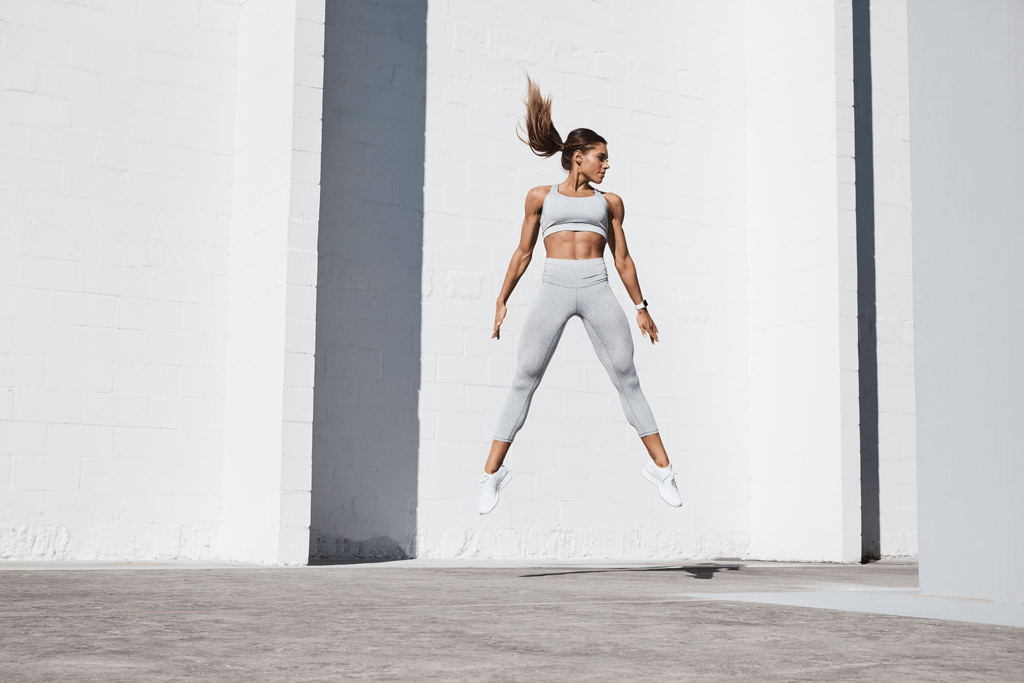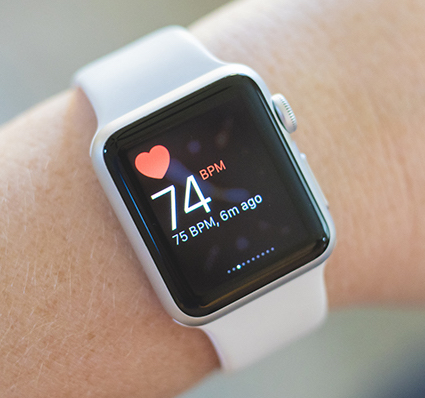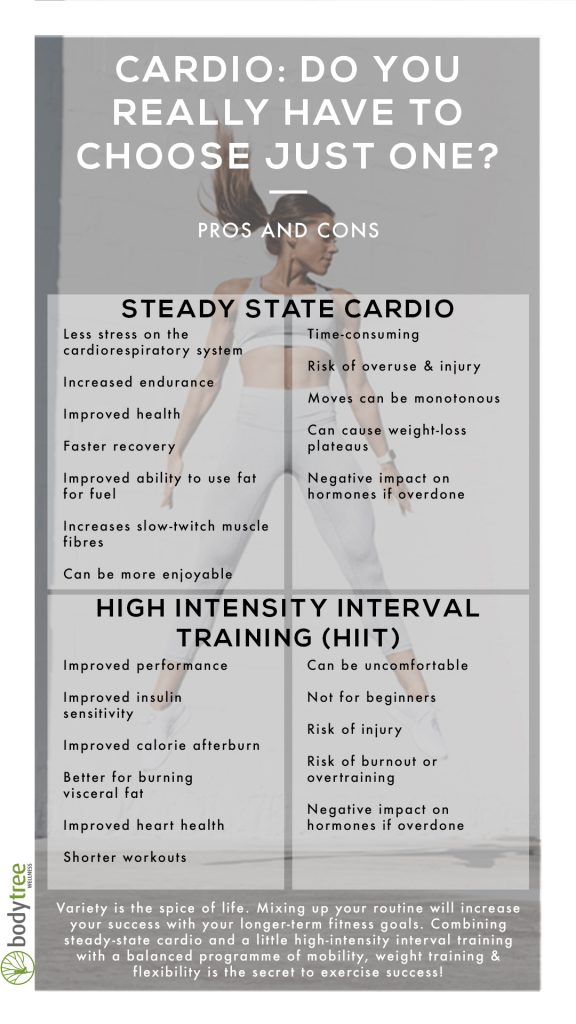
HIIT vs Steady-State Cardio: Do You Really Have to Choose Just One? By Nadia Sehweil
Back-to-back sessions of HIIT can burn calories but they can also run your body ragged. There’s a role for both steady-state & HIIT cardio in your fitness routine.
What is the difference between steady-state cardio and High-Intensity Interval Training (HIIT)? Some argue steady-state is inefficient while others counter that the traditional approach offers benefits you can’t get from pushing yourself to exhaustion. Although several researchers push the efficacy of HIIT there are drawbacks to overdoing it.
Over the years of teaching, I’ve seen that a combination of both steady-state & HIIT, tailored to each person’s needs, abilities, and specific conditions is what works best. Cardio ultimately improves your lungs, strengthens the cardiovascular system and targets muscles. As a bonus, it can help with weight loss goals and positively impact longevity. The biggest plus is the increased endorphin release.

Let’s Explore the Differences
Steady-state cardio workouts are simple—all you have to do is perform an activity at a challenging but achievable pace around 60-70 percent for 20 mins or more aiming for 120-150 bpm. HIIT workouts, on the other hand, have you performing at 80-95 percent of maximum heart rate for a set interval of time with a recovery period & a repeat of the interval a few times.
Steady-state cardio is aerobic: It requires oxygen and is fueled mostly by stored fat whereas HIIT is anaerobic. The intervals don’t rely solely on oxygen and are fueled mostly by stored carbohydrates.

Both types of cardio improve a plethora of health markers such as blood pressure, metabolism function and oxygenation but overdoing either form has drawbacks and you may start seeing regression.
If you’re feeling stressed out, HIIT is probably not a good idea as it raises cortisol and overtaxes your system. In this condition, you may benefit more from meditative steady-state cardio like a jog. It can however, have its drawbacks. Performing a single action repetitively can load up one part of the body increasing the rate of injury, which is why runners experience frequent foot, knee and hip issues.
I have seen the best results when people alternate between the two forms of cardio. HIIT is very efficient and indisputably works best when trying to lose weight as metabolism remains raised for hours post-workout. We have also seen an improvement in metabolic flexibility with HIIT, which is the capacity to transition smoothly from burning fat to burning carbohydrates (during work intervals).
Clients see an improvement in their performance in all types of training. Overtraining using HIIT, however, can stimulate a constant fight or flight response from your autonomic nervous system and lead to restlessness, sleeplessness & other symptoms.

What’s the Best Training Programme for You?
Understand where you are in your life. If you are stressed, overworked and not getting enough sleep, skip the HIIT training until you can get your life in check.
Beginners will also have different needs than an athlete. Set your goal, choose your programme with a health professional and start slowly. Since aerobic fitness is the foundation of so many activities all beginners should start with steady-state cardio at first regardless of long-term goals. Aim for a couple of aerobic cardio weekly and build up to 30-45 minutes.
Experienced exercisers should examine their resting heart rate. If below 60bpm, then try HIIT training. If it’s above 65bpm, start with steady-state training and then build up to HIIT.
It’s a good idea for all of us to monitor our resting heart rate and push our body only as far as it feels right on any given day. Ultimately, the programme you choose should be goal-driven but also intuitive.
And the final word…
Variety is the spice of life. Mixing up your routine will increase your success with your longer-term fitness goals. Combining steady-state cardio and a little high-intensity interval training with a balanced programme of mobility, weight training and flexibility is the secret to exercise success!





No Comments